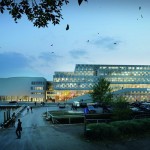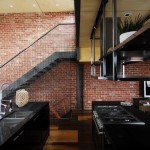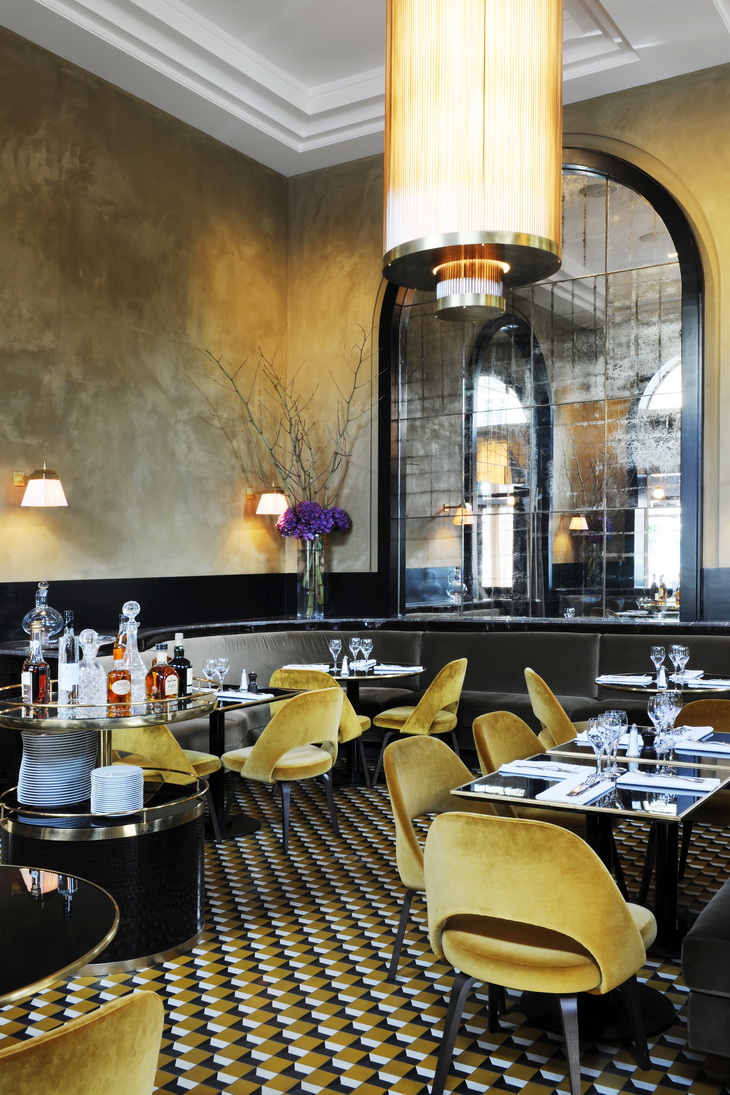
In Paris, restaurant Le Flandrin takes off in a new decor designed by Joseph Dirand. The brasserie menu is also renewed and the facing south terrace is one of Paris’must.

About the Restaurant:
On the edge of the Bois de Boulogne IN PARIS, at the quiet confluence of two double boulevards and three leafy avenues, where the wide-open sky meets the terrace of Le Flandrin, Parisian art-de-vivre reaches its zenith.
Tracing the phantom path of La Petite Ceinture railway, the double-spaced boulevards that intersect at the Place Tattegrain, and the clamour of avenues that join it, expose a vast amphitheatre of sky to the stage of Le Flandrin’s terrace.
Claiming all 180 of the potential degrees of daily sunshine, morning as high afternoon as summer night, Le Flandrin ranks fabled amidst the canon of Parisian terraces scattered elsewhere across the capital.
Such a privileged aspect has ensured that since its inception, Le Flandrin has enjoyed its status as one of the 16th’s emblematic addresses, as well as the faithful patronage of Paris’ finest clientele.
A bulwark of the capital’s brasserie tradition since the Malafosse family first opened its doors in 1932, Le Flandrin has more recently assumed increasingly cosmopolitan allures, up to the present day as it reopens redoubled, a restaurant and bar in the classic tradition but of entirely contemporary tone.
Le Flandrin’s renaissance sees the 16th claim another considerable stake in Paris’ social melee, with proprietor Gilles Malafosse leading the fray, after the success of his 2013 restaurateur Monsieur Bleu, at the Palais de Tokyo. These openings mark the arrondissement’s burgeoning reawakening as one of the city’s most vibrant quarters. In continuing collaboration with architect Joseph Dirand (Monsieur Bleu), Malafosse has sought to recover the smoky glamour of the site’s original époque, in pursuit of an international clientele, pleasure seekers and business people alike, Parisian or otherwise.
Presiding over Le Flandrin for some ten years already, Chef Olivier Denis has developed a seasonal menu of high quality produce that builds upon its luxury brasserie roots in search of an iconic, intimate and contemporary Parisian dining experience. Braised leeks vinaigrette, Vietnamese nems or Kaspia caviar span the breadth of the starter menu. Refined diners will delight over frog’s legs and veal livers while comfort eaters will fall for macaroni cheese and lobster rolls. Carpaccios, tartars, and salads, followed by a wide range of artisanal ice creams and sorbets anticipate the al fresco lunches of the warmer months to come, while offering those crucial lighter choices for the lingering meantime. The winter brings Marennes-Oléron oysters and, more unusually, sea urchins, to the ecailler’s range of shellfish.
Pastry chef Jeffrey Cagnes has concocted a classic dessert menu offering red berry pavlovas, bourbon vanilla millefeuilles, and forest strawberries decked in mascarpone chantilly.
Fortification at Le Flandrin is a tale of integral Parisian flair, and instinctive international appeal.
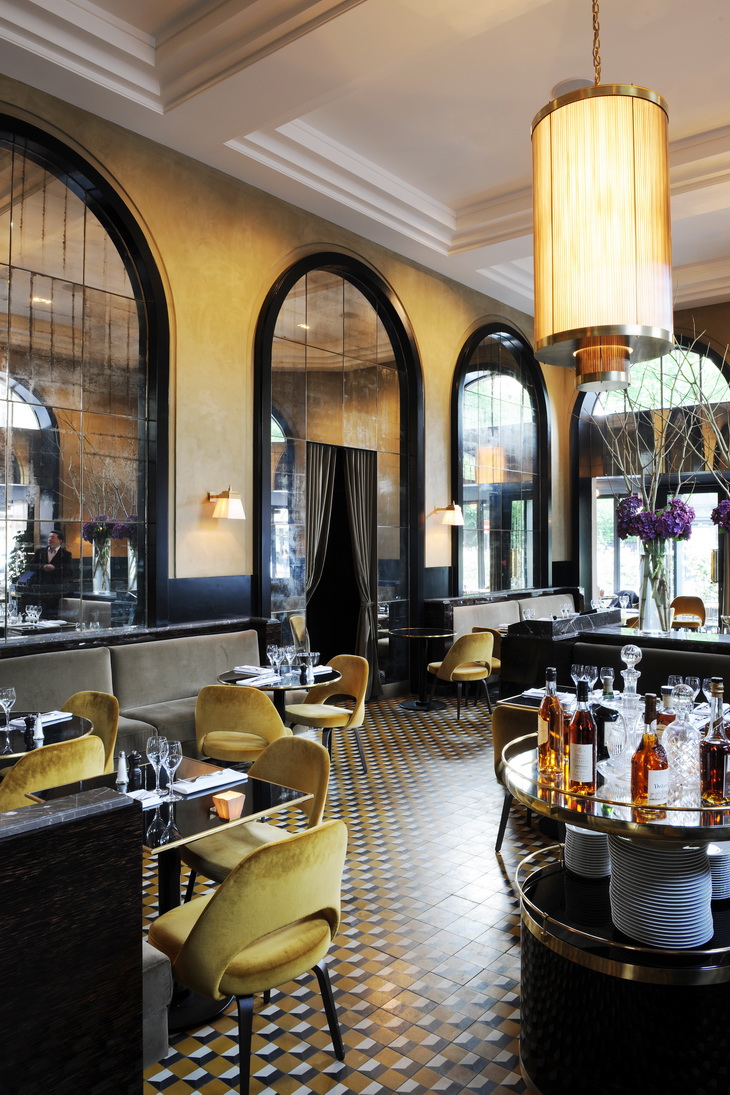
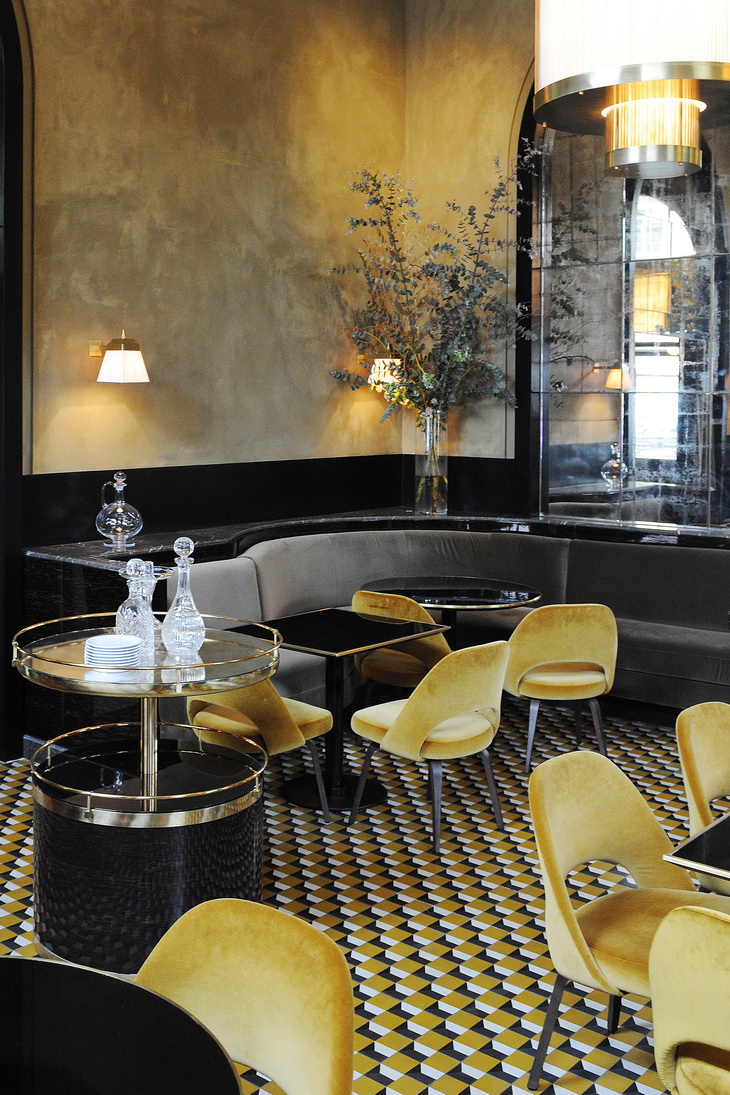
The Architecture
Joseph Dirand’s architectural scheme sees the mezzanines disappear and cascades of pink brick and limestone emerge, restoring the historic arcaded hall, whose rhythmic symmetry re-establishes the integrity of the original building. The entry, through one such archway, achieves a sense of monumentality, yet the intimate lighting of suspended glass lampshades softens the lively spirit so peculiar to the Parisian brasserie and its traditionally deep volumes. And Dirand has been careful to balance the multiple facets of the restaurant: bright by day, with evenings of more hushed illumination, the interplay of smoked mirrors mirrors the gradual transformations of the passing hours.
The material configuration of Le Flandrin conspires to a quiet, classic luxury with just the gentlest suggestion of decadence. The banquettes buck the brasserie tradition, chocolate hues of wood and mohair velvet upholstery in khakis, mustards and smoked greens, assembling the atmosphere of a private club. The elemental curves of Eero Saarinen chairs share the floor with the architect’s own designs: polished palm wood and brass lipped circular tables evoking the prevailing styles of the 1930s. The lounge is a veritable ode to Czech Cubism with black lacquer-gilt trim wood panelling and a smoked mirror ceiling enframing an imposing bar in yellow-veined white Calcutta Gold marble.
The architectural arrangement sees the sober-chic heart of the brasserie – the dining room and lounge – encircled by the updated interior terrace, before endless tables radiate out on bright days into a sunlit cacophony of white cotton, crystal and silver. And happily, the concentric layout permits to each their privileged view of the surroundings, while seeming all the while to remain inconspicuous themselves; to see and to be seen in perfect intimacy.
Project: Renewal of Le Flandrin Restaurant
Designed by Joseph Dirand
Location: Paris, France
Website: karlaotto.com


